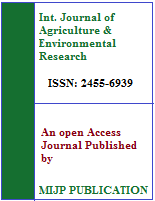Glucosinolates (GSL) present in cultivated and feral accessions of mashua (Tropaeolum tuberosum í & Pavón) were identified and quantfied by High Performance Liquid Chromatography (HPLC) analysis. The nwin glucosinolates detected were aromatic: 4—Hydroxybenzyl GSL (OHB, Glucosinalbin), Benzyl GSL (B, Glucotropaeolin), and m—Methoxybenzyl GSL (MOB, Glucolimnathin). The total amount of GSL observed ranged from 0.27 to 50.74 micromols per gram (µMol/g) of dried tuber tissue. Most of the low-content GSL accessions are distributed within the cultivated population with a total GSL concentration lower than 5.00 µMol/g of dried tuber tissue. The highest total and specific GSL (OHB, B, and MOB) contents (more than 25.00 µMol/g of dried tuber tissue) were observed in the feral population with few exceptions. in addition, only six different GSL profiles were found: Only MOB; only B; OHB and B; OHB and MOB; B and MOB; and OHB, B and MOB.
Glucosinolate survey of cultivated and feral mashua (Tropaeolum tuberosum Ruíz & PavÓn) in the Cuzco region of Peru
Citation: Ortega, O.R., Kliebenstein, D.J., Arbizu, C., Ortega, R., & Quiros, C.F. (2006). Glucosinolate Survey of Cultivated and Feral Mashua (Tropaeolum tuberosum Ruíz & Pavón) in the Cuzco Region of Peru. Economic Botany. ISSN: 1874-9364. 60(3), 254–264.
2021-06-07
ANDEAN ROOTS AND TUBERS, CROP AND SYSTEMS SCIENCES CSS, CROP PROTECTION, GENEBANK, GENETIC RESOURCES, GENETICS, GENOMICS AND CROP IMPROVEMENT SCIENCES GGCI
SOUTH AMERICA
PERU
journal_article



